Resources
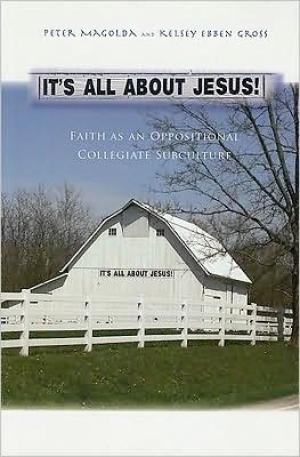
What it is like to be a collegian involved in a Christian organization on a public college campus? What roles do Christian organizations play in the lives of college students enrolled in a public college? What are evangelical student organizations’ political agendas, and how do they mobilize members to advance these agendas? What is the optimal equilibrium between the secular and the sacred within public higher education? What constitutes safe space for evangelical students, and who should provide this space? This book presents a two-year ethnographic study of a collegiate evangelical student organization on a public university, authored by two “non-evangelicals.” The authors provide a glimpse into the lives of college students who join evangelical student organizations and who subscribe to an evangelical way of life during their college years. They offer empirically derived insights as to how students’ participation in a homogeneous evangelical student organization enhances their satisfaction of their collegiate experience and helps them develop important life lessons and skills. Ironically, while Christian students represent the religious majority on the campus under study, Christian organizations on this campus mobilize members by capitalizing on members’ shared sense of marginalization, and position themselves as cultural outsiders. This evangelical student organization serves as a safe space for students to express their faith within the larger secular university setting. The narratives and interpretations aim not only to enrich understanding of a particular student organization but more importantly to spark intellectual discourse about the valueof faith-based organizations within public higher education. The role of religion in public higher education, student involvement in the co-curriculum, and peer education are three examples of critical issues in higher education for which this idiosyncratic case study offers broad understanding. It’s All About Jesus! targets multiple audiences – both sacred and secular. For readers unfamiliar with evangelical collegiate organizations and the students they serve, the authors hope the narratives make the unfamiliar familiar and the dubious obvious. For evangelicals, the authors hope that the thickly described narratives not only make the familiar, familiar and the obvious, obvious, but also uncover the tacit meaning embedded in these familiar, but seldom examined subculture rituals. The authors hope this book spurs discussion on topics such as campus power and politics, how organizations interact with the secular world around them, and how members can improve their organizations. Additionally, this text urges secular readers in student affairs to consider the many benefits, as well as liabilities, of “parachurches” as co-curricular learning sites on campus. Lastly, given that the authors lay bare their methodology, their use of theory, and the tensions between their perspectives and those of the participants, this book will serve as a compelling case study for courses on qualitative research within religion studies, anthropology, sociology, and cultural studies fields. (From the Publisher)
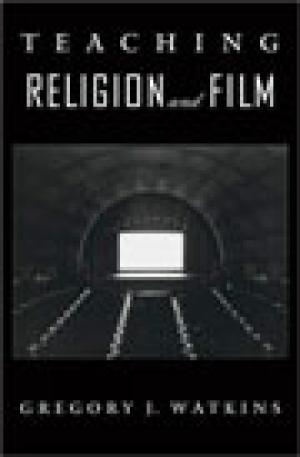
In a culture increasingly focused on visual media, students have learned not only to embrace multimedia presentations in the classroom, but to expect them. Such expectations are perhaps more prevalent in a field as dynamic and cross-disciplinary as religious studies, but the practice nevertheless poses some difficult educational issues — the use of movies in academic coursework has far outpaced the scholarship on teaching religion and film. What does it mean to utilize film in religious studies, and what are the best ways to do it? In Teaching Religion and Film, an interdisciplinary team of scholars thinks about the theoretical and pedagogical concerns involved with the intersection of film and religion in the classroom. They examine the use of film to teach specific religious traditions, religious theories, and perspectives on fundamental human values. Some instructors already teach some version of a film-and-religion course, and many have integrated film as an ancillary to achieving central course goals. This collection of essays helps them understand the field better and draws the sharp distinction between merely "watching movies" in the classroom and comprehending film in an informed and critical way. (From the Publisher)
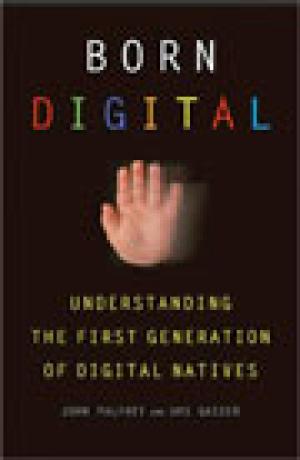
The first generation of “digital natives” – children who were born into and raised in the digital world – are coming of age, and soon our world will be reshaped in their image. Our economy, our cultural life, even the shape of our family life will be forever transformed. But who are these digital natives? How are they different from older generations – or “digital immigrants” – and what is the world they’re creating going to look like? In Born Digital, leading internet and technology experts John Palfrey and Urs Gasser offer a sociological portrait of this exotic tribe of young people who can seem, even to those merely a generation older, both extraordinarily sophisticated and strangely narrow. Based on original research, Born Digital explores a broad range of issues, from the highly philosophical to the purely practical: What does identity mean for young people who have dozens of online profiles and avatars? Should we worry about privacy issues – or is privacy even a relevant concern for digital natives? How does the concept of safety translate into an increasingly virtual world? Is “stranger-danger” a real problem, or a red herring? What lies ahead – socially, professionally, and psychologically – for this generation? A smart, practical guide to a brave new world and its complex inhabitants, Born Digital will be essential reading for parents, teachers, and the myriad of confused adults who want to understand the digital present – and shape the digital future. (From the Publisher)
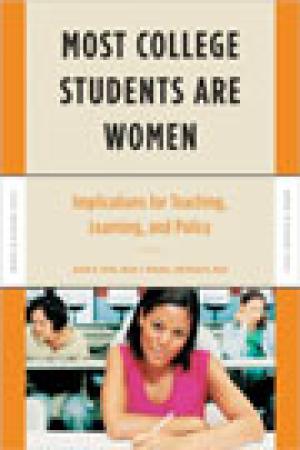
* Reveals continuing barriers to success for women students * Offers remedies that will benefit all students What are the realities behind recent press reports suggesting that women students have taken over higher education, both outnumbering males and academically outperforming them? Does women's development during college diverge from the commonly accepted model of cognitive growth? Does pedagogy in higher education take into account their different ways of knowing? Are there still barriers to women's educational achievement? In answering these questions, this book's overarching message is that the application of research on women's college experiences has enriched teaching and learning for all students. It describes the broad benefits of new pedagogical models, and how feminist education aligns with the new call for civic education for all students. The book also examines conditions and disciplines that remain barriers for women's educational success, particularly in quantitative and scientific fields. It explores problems that arise at the intersection of race and gender and offers some transformative approaches. It considers the impact of the campus environment—such as the rise of binge drinking, sexual assault, and homophobic behaviors—on women students' progress, and suggests means for improving the peer culture for all students. It concludes with an auto-narrative analysis of teaching women's studies to undergraduates that offers insights into the practicalities and joys of teaching. At a time when women constitute the majority of students on most campuses, this book offers insights for all teachers, male and female, into how tohelp them to excel; and at the same time how to engage all their students, in all their diversity, through the application of feminist pedagogy. (From the Publisher)
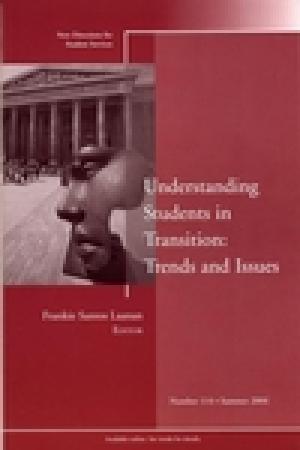
This volume provides the latest recommendations on how to address the needs of students in transition at the collegiate level. Understanding Students in Transition covers transitions affecting recent high school graduates, community college transfer students, older adults returning to education, and students displaced by natural disasters. Addressing the needs of students in the midst of change, particularly those who are part of the "millennial generation" (those born between 1982 and 2003), requires a full understanding of today's students and what they bring to their new college experience. Understanding Students in Transition is designed for practitioners looking to understand the changing landscape of today's college students. Articles present a mix of research and practical issues that will be relevant and useful to various stakeholders on a college or university campus. (From the Publisher)
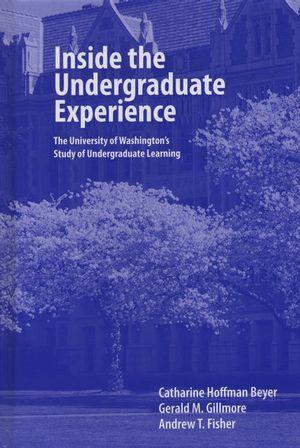
The University of Washington’s Study of Undergraduate Learning (UW SOUL) tracked 304 entering freshmen and transfer students as they moved through their college experience from fall 1999 to spring 2003. Unparalleled in its scope, this longitudinal study focused on six areas of learning: writing, critical thinking/problem solving, quantitative reasoning, information literacy, understanding and appreciating diversity, and personal growth. This book provides faculty, staff, and administrators at two- and four-year institutions with a model of assessment that both captures the complexity of the undergraduate experience and offers practical information about how to improve teaching and learning. Data from surveys, open-ended email questions, interviews, focus groups, and portfolios make it possible for the authors to create case studies of individual learning paths over time, as well as to report the group’s aggregate experience. Honoring the authenticity of student voices, this book illuminates the central roles played by the academic disciplines and by faculty in undergraduate learning, offering powerful evidence for the argument that assessment of student learning is most complete and most useful when conducted at the department level. (From the Publisher)
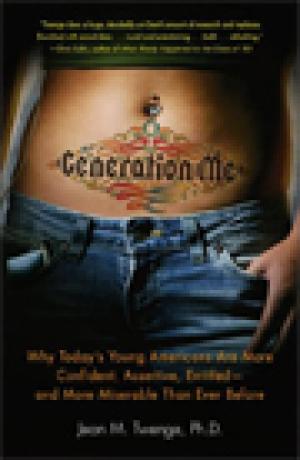
Called "The Entitlement Generation" or Gen Y, they are storming into schools, colleges, and businesses all over the country. In this provocative new book, headline-making psychologist and social commentator Dr. Jean Twenge explores why the young people she calls "Generation Me" -- those born in the 1970s, 1980s, and 1990s -- are tolerant, confident, open-minded, and ambitious but also cynical, depressed, lonely, and anxious. Herself a member of Generation Me, Dr. Twenge uses findings from the largest intergenerational research study ever conducted -- with data from 1.3 million respondents spanning six decades -- to reveal how profoundly different today's young adults are. Here are the often shocking truths about this generation, including dramatic differences in sexual behavior, as well as controversial predictions about what the future holds for them and society as a whole. Her often humorous, eyebrow-raising stories about real people vividly bring to life the hopes and dreams, disappointments and challenges of Generation Me. GenMe has created a profound shift in the American character, changing what it means to be an individual in today's society. The collision of this generation's entitled self-focus and today's competitive marketplace will create one of the most daunting challenges of the new century. Engaging, controversial, prescriptive, funny, Generation Me will give Boomers new insight into their offspring, and help those in their teens, 20s, and 30s finally make sense of themselves and their goals and find their road to happiness. (From the Publisher)
Good teaching is both powerful and cautious. It is powerful insofar as it creates engaged students. Because an engaged mind is particularly receptive, however, good teaching is also cautious insofar as it provides students with focused guidance through the process of appropriating the learning material. This article reflects critically on expressionist pedagogy by evaluating a classroom situation in which students reacted in unexpected ways to the professor's disclosure of a personal story. It concludes that effective teaching exceeds the goal of merely facilitating student engagement. That is, the use of self-disclosure has the power to create engaged students, but it also requires cautious content consideration when facilitating post-disclosure learning. If, by using the powerful expressionist pedagogy of self-disclosure, we engage students but fail to cautiously guide them through the learning material, we have not taken seriously the ethical responsibility that teaching also implies.
Emerging from the particular experiences of the marginalized, postmodern pedagogies (bell hooks, Paolo Freire, feminist pedagogies) argue that education is more than conveying information from teacher to student. Rather education should encompass the transformative process of shaping character, values, and politics through the dynamic interaction among the teacher, the students' experiences, and the content of the instructional material. These perspectives argue that educators should reject "the banking model" of education, and teach to transform. However, religious studies with today's black college student tests the mettle of these approaches. On the one hand, historically black colleges and universities (HBCUs) have long practiced transformative education through a commitment to shaping both the minds and characters of their students. On the other hand, many of today's black college students are less receptive to transformation, particularly in the academic study of religion. This resistance to transformation is a reflection of (1) the socio-economic reality of the current student, and (2) a new black religiosity that portrays the world in binary terms. These economic and religious realities present a teaching context for which few religious scholars are prepared. This essay discusses the particularities of teaching religion to today's black college student by sharing the challenges, failures, successes, and joys of teaching religion at a small church-related, historically black women's college in the south. I will discuss the techniques that fail, and the way in which this unique context causes me to transform the way I teach religion. In the midst of a commitment to postmodern pedagogies, I feel a need to return to the banking model's establishment of authority and emphasis on content. As I negotiate with this method, I find ways to stealthily infuse transformative pedagogical techniques. I also discuss the way such a dramatic shift in pedagogy has transformed me, the teacher.
In a postcolonial environment, our students will encounter multiple representations and diverse followers of various religions outside the classroom. Students need to think critically about the representations of all religions and recognize the humanity of all people. Too often, students leave courses discussing one or more world religions with an idealized view of other religions that draws strict boundaries around the components of each religion. Bringing postcolonial thought into introductory and survey courses highlights the diversity within each lived religion and encourages students to critique those strict borders and all representation of religions. Based on continuing experiments with critical theory in undergraduate classes, the six strategies presented here use the diversity of lived religions to promote critical analysis of representations of religions. These strategies move beyond the rejection of common representations by introducing set theory as an alternative framework that students can use to theorize about the complexity within religions.